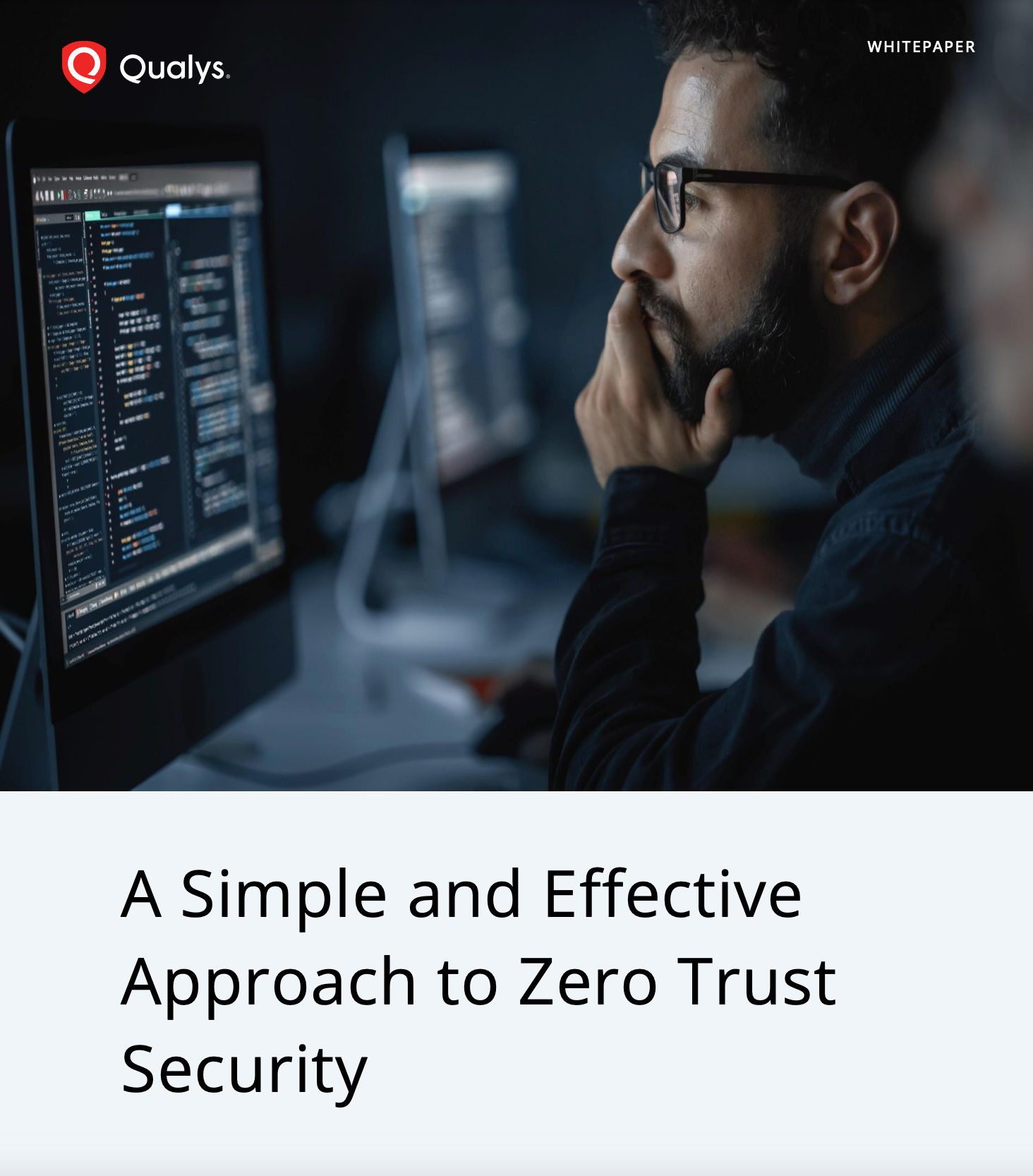Complimentary Whitepaper
Qualys Zero Trust WhitePaper
A Simple and Effective Approach to Zero Trust Security
According to The State of Zero Trust 2022 report from Okta, only 16 percent of companies surveyed in 2019 planned to have a zero trust initiative in place. Today, that number is 97 percent. However, only 55 percent have actually initiated a plan. Many IT and security professionals often dread the tedious process of federal government bureaucracy. If you’re a chief information or chief information security officer (CIO or CISO) for a federal agency, supplier, or regulated private sector firm, the list of required cybersecurity rules can seem endless and unchanging. White House Executive Orders, FedRAMP requirements, CISA Binding Operational Directives, NIST guidelines, FISMA modernization mandates – and a legion of Inspector Generals line up at the door to deliver fines, censures, and penalties for non-compliance. Federal civilian executive branch agencies are all tasked with creating and using a zero-trust architecture (ZTA).
This Qualys Zero Trust whitepaper offers details about Cybersecurity and Infrastructure Security Agency (CISA) Zero Trust Maturity Model Version 2.0, The Department of Defense (DoD) Zero Trust Reference Architecture, and the National Institute of Standards and Technology (NIST) Zero Trust Architecture from special publication (SP) 800-207. In this white paper you’ll learn answers to these questions:
- Which of the three most common Zero Trust models are best?
- Which Zero Trust model is optimal for which industries and types of firms?
- What are the commonalities between the three main Zero Trust models?
- What’s required to quickly and affordably implement a Zero Trust model?
- What are common pitfalls when implementing Zero Trust?
- How does Zero Trust extend beyond Identity Access and Management (IAM)?
- How do vulnerability & patch management and policy compliance impact Zero Trust?
- What’s the best way to implement a bullet-proof Zero Trust Architecture?
DOWNLOAD PAPER
By submitting this form, you consent to Qualys' privacy policy.

